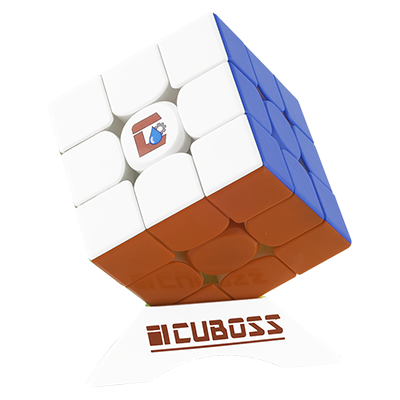Advanced speedcubing method – CFOP
CFOP? – The fastest method for solving the Rubik’s cube! CFOP stands for Cross, F2L, OLL and PLL. Here, we will show how this method works.
The Cross

This first step involves solving four edge pieces on one side to form a cross. The most common way is to start with the white side because most guides online start with white, which makes it easier to follow. This step is the most intuitive step. Algorithms are not usually used to solve the cross because of the incredible number of cases that can arise. Thus, the cross is solved differently each time, depending on the starting position. The cross can always be solved in 8 or fewer moves.
Advanced cross - guideF2L - First Two Layers

This step involves solving the first two layers simultaneously. This is done by pairing a corner piece and an edge piece together, and then placing the pair between the correct center and cross pieces. When you have placed all four pairs, you have formed two solved layers together with the cross in the first step. This part takes the longest time to do, but can also be seen as the most fun step because you usually solve it intuitively. It is however also possible to learn algorithms and various tricks for F2L as well.
F2l guide Advanced F2LOLL - Orientation of the Last Layer

This step involves orienting all pieces of the top layer so that the correct color is pointing up. Doing this ignores the other colors on the top layer. There are 57 different algorithms for orienting the last layer. Because there are so many different OLL algorithms, speedcubers usually start by learning 2 look OLL, which means doing it in two steps. With that method, one needs to learn 7 to 10 algorithms. However, this means that one needs to perform two algorithms to solve this step, which takes slightly longer time.
2 Look guide OLL guidePLL - Permutation of the Last Layer

The final step involves moving the pieces of the top layer around while keeping them oriented. There are 21 PLL algorithms, but also this step can be learned in two parts – 2 look PLL. There are six 2 look PLL algorithms to learn. Note that there is no loss in learning the 2 look versions of OLL and PLL since the 2 look algorithms are included in the full versions of 57 and 21 algorithms.
2 Look guide PLL guide

